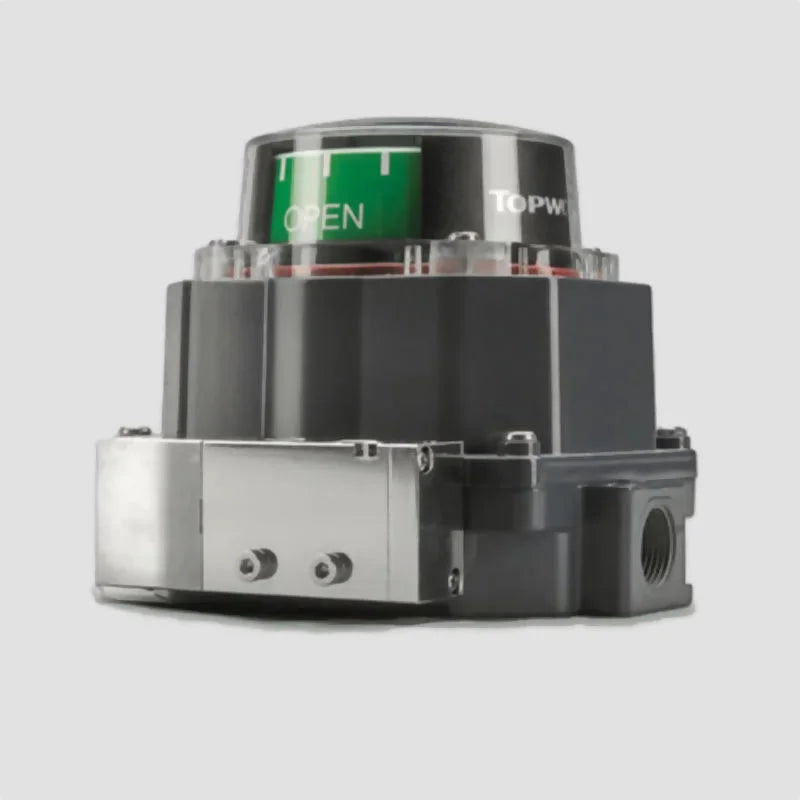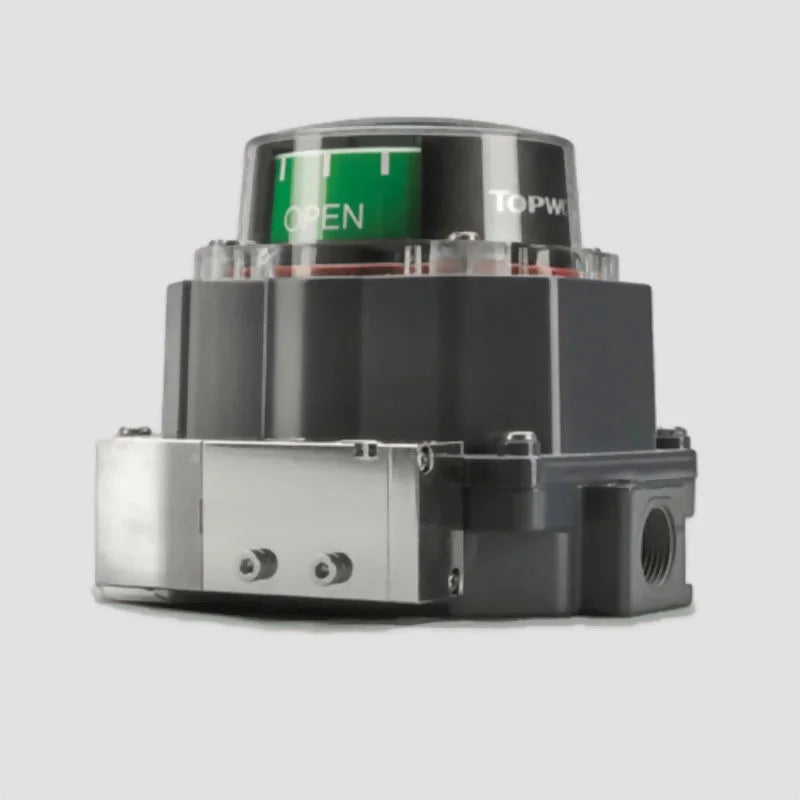Topworx Switchboxes
TopWorx Limit Switch Box TVL-R2GRNPM Valve Monitor
TopWorx Limit Switch Box TVL-R2GRNPM Valve Monitor
Couldn't load pickup availability
The TopWorx TVL-R2GRNPM Limit Switch Box is engineered to provide precise and durable valve position feedback in demanding industrial environments. As part of the industry-trusted TVL Series, this valve monitor features mechanical SPDT switches, a clear visual indicator, and a robust GRP enclosure, making it a top choice for on/off valve applications in oil & gas, chemical processing, water treatment, and general automation.
Built with a NAMUR-compatible mounting base and IP67 ingress protection, the TVL-R2GRNPM ensures seamless installation and long-term reliability. Its glass-reinforced polyester body offers excellent corrosion resistance, while dual conduit entries provide flexible wiring options. This model delivers clear electrical and visual feedback, ensuring operators always know valve status at a glance.
🔑 Key Features:
2 SPDT Mechanical Switches: Provides dependable open/closed position signals
NAMUR Mounting: Universal compatibility with most pneumatic actuators
Clear Dome Indicator: Instantly shows valve position locally
IP67 Rated Enclosure: Fully sealed against water and dust
GRP Construction: Lightweight and corrosion-resistant for tough environments
Dual Conduit Entries: 2 × 1/2” NPT for flexible cable management
Wide Temperature Range: Reliable performance from -40°C to +85°C
Factory Pre-Wired: For quick and easy installation
📊 Product Specifications
| Specification | Details |
|---|---|
| Model | TVL-R2GRNPM |
| Manufacturer | TopWorx (Emerson) |
| Series | TVL Series |
| Switch Type | 2 × SPDT Mechanical Switches |
| Visual Indicator | Open/Closed Dome Indicator |
| Mounting Interface | NAMUR Standard |
| Enclosure Rating | IP67 |
| Material | Glass Reinforced Polyester (GRP) |
| Conduit Entries | 2 × 1/2” NPT |
| Operating Temperature | -40°C to +85°C |
| Certifications | CE, CSA, ATEX (depending on config) |
| Ideal For | Pneumatic Actuators, Process Valves, General Automation |
The TopWorx TVL-R2GRNPM delivers proven field performance and installation flexibility, making it a smart investment for any valve automation system. Its rugged design ensures continuous operation in even the harshest settings—minimizing downtime and maximising control.
📦 Need help choosing the right switchbox? Contact us today for expert support and fast delivery!
Share

Enquire Online!
FAQ's
What is the difference between a valve and an actuator?
What types of actuators are available?
The main types of actuators are:
Pneumatic actuators – use compressed air for fast, reliable operation.
Electric actuators – use electrical power for precise control.
Hydraulic actuators – use fluid pressure for high-torque applications.
Each type offers unique advantages depending on the environment, media, and system control needs.
How do I choose the right actuator for my valve?
To select the correct actuator, consider:
Valve type and torque requirement
Power source available (air, electric, or hydraulic)
Operating environment (temperature, humidity, hazardous area)
Control signal type (on/off or modulating)
Matching actuator torque and compatibility with the valve’s ISO mounting ensures reliable performance.
What are the main types of valves used in automation?
The most common valves in automated systems include:
Ball valves – for tight shutoff and quick operation.
Butterfly valves – for larger flow control with compact design.
Globe valves – for precise throttling and flow regulation.
Check valves – to prevent backflow.
Gate valves – for full bore flow isolation.
What’s the difference between a double-acting and spring-return actuator?
Double-acting actuators use air (or power) to both open and close the valve.
Spring-return actuators use air to open (or close) the valve, and a built-in spring to automatically return it to a safe position when power or air is lost — ideal for fail-safe operation.
How often should valves and actuators be serviced?
Regular maintenance intervals depend on operating conditions, but a good rule of thumb is to inspect every 6–12 months.
This includes checking for leaks, lubrication, seal wear, and actuator responsiveness to prevent unexpected downtime.

